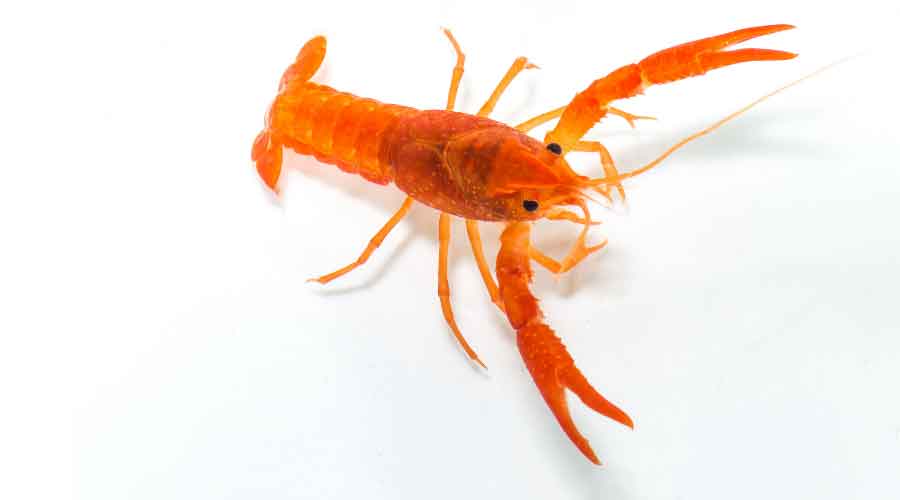Crayfish are very interesting animals and a favorite for many aquarists (like me). In this blog, we’ll take a look at the Mexican dwarf crayfish and caring for the Mexican dwarf crayfish.
Let’s jump right in.
About the Mexican Dwarf Crayfish
The cambarellus patzcuarensis, aka orange dwarf crayfish, or Mexican dwarf crayfish is known for its beautiful and vibrant orange color, although there are some variations that come in brown, tan, etc. They can add tremendous color to your tank. Mexican Dwarf Crayfish are little creatures and grow to be two inches and live for one to two years. So they are a bit smaller than regular crayfish but still have a pretty good lifespan.
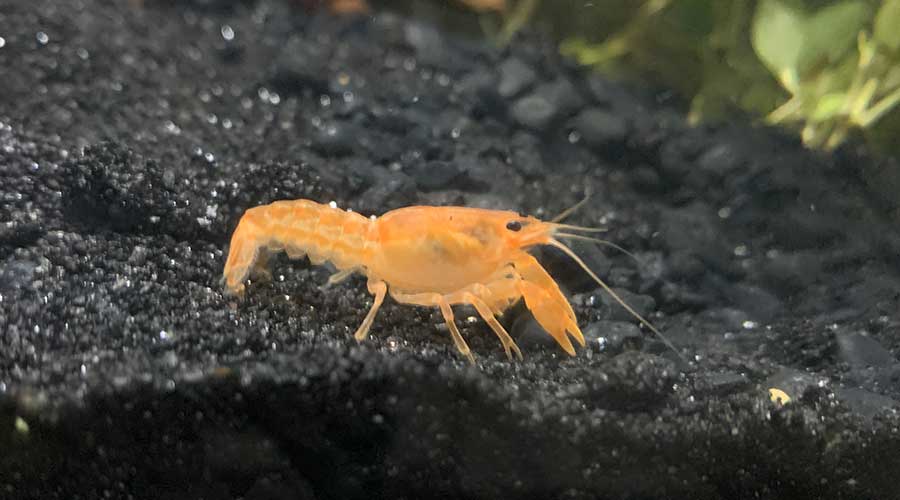
These crayfish are native to Mexico. The dwarf Mexican crawfish comes specifically from Lake Pátzcuaro. This is a volcanic crater lake that is located in the city of Morelia, Mexico. The dwarf Mexican cray can also be found in some parts of the Southern United States. They are usually found in streams and rivers, but can also be found in lakes and ponds.
The Mexican dwarf crayfish, unlike many other crayfish, aren’t nearly as aggressive. Although they can be territorial, generally speaking, they aren’t as aggressive as something like a blue crayfish. Therefore, they make great additions to community aquariums. However, not every situation is ideal to keep the Mexican dwarf crawfish.
Care Considerations for Mexican Dwarf Crayfish
- Water Temp: 68 to 77 degrees F
- Suggested tank size (will depend on other fish): 10 gallons
- Care Level: Relatively easy
- Water pH: 7,5-8,0
- Diet: Omnivores
- Temperament: Peaceful
- Size: Two inches
- Lifespan: One to two years
The Tank
In general, the orange dwarf crayfish does best in a tank of at least 10 gallons, although some will say a five-gallon tank will suffice. The reason why I suggest a 10-gallon tank is in the event more fish are added to the tank. However, if you plan on keeping more than one cray, a 20-gallon fish tank is probably best.
Always remember that tank size is directly related to the aquatic life you are keeping. It’s critical to consider the aquatic life in your tank, their personalities and dispositions, and tank size.
And note, with bigger tanks, keeping the tank clean is easier. That’s because bigger tanks don’t get dirty as fast as smaller tanks.
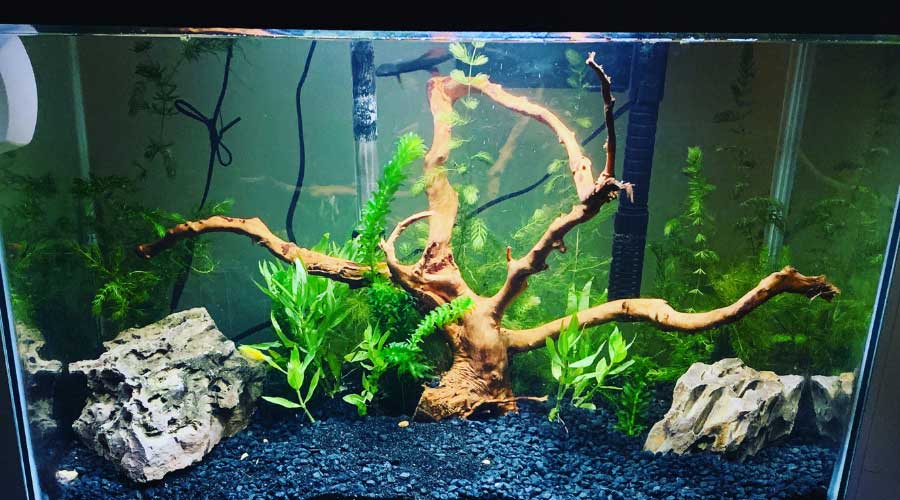
The water temperature for these beautiful creatures should be kept between 68 to 77 degrees F. Mexican Dwarfs are very sensitive to ammonia and nitrites, so make sure your tank is properly cycled before adding a Mexican Dwarf.
Additionally, tanks that house these animals need an efficient filtration system, and owners of these types of crayfish should do water changes regularly to keep their crawfish’s environments healthy. I’d suggest roughly 20 to 25% water changes every week or two. Different variables like the number of fish and plants in a tank can impact frequency of water changes.
Substrate
For a Mexican dwarf crayfish, using sand and small gravel to bed your tank would be best. Like other crayfish, these guys like to burrow and hideout.
Feeding
Feeding the Mexican dwarf crayfish is pretty easy. These guys are omnivores and will eat pretty much anything they can find or capture. These crays can live on sinking algae pellets. But ideally, a combination of live food such as bloodworms, brine shrimp, and snails works well. Crayfish love to eat!
What Do Mexican Crayfish Eat?:
- Brine shrimp
- Bloodworms
- Vegetables (Zucchini, Cucumber, etc.)
- Sinking algae pellets
Tankmates
Mexican Dwarf crayfish are great for community tanks as they are not nearly as aggressive as other crayfish. Again, just always consider your tank size and the other fish you are keeping in it. The wrong mix of fish together could be a disaster.
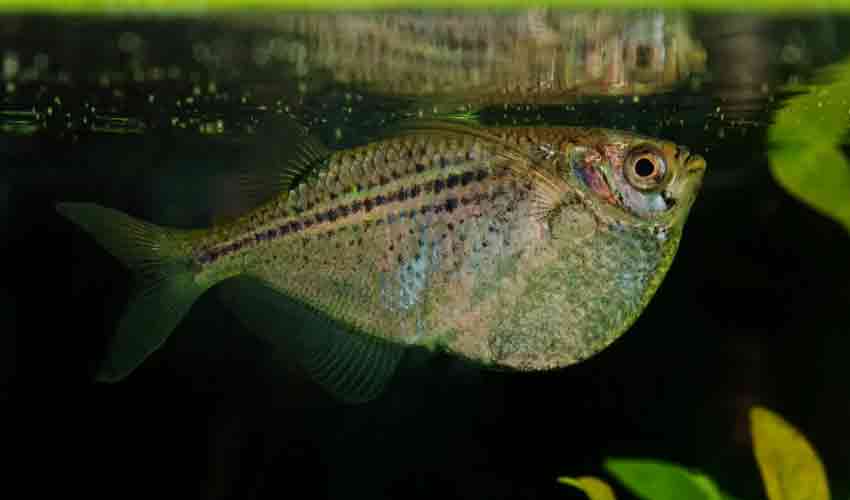
Freshwater fish tankmates for these crays often include other peaceful small fish that work well in community tanks. Fish like the ones listed below should do well.
- Neon Tetras
- Hatchet Fish
- Guppies
- Platies
- Congo Tetra
- Corydoras
- Rams
Molting
As Mexican dwarf crayfish grow bigger, just like other crayfish, they will molt.
You can usually tell when a crayfish is about to molt as they will become less active, stop eating, and hide or be still in one place of the fish tank.
If you ever wake up one morning and see what appears to be a “shell” or body of a crayfish, don’t panic just yet. Your crayfish has probably just molted. Molting is totally normal and healthy for your crayfish.
Usually, crayfish will eat their molted exoskeleton because they need the calcium to build the strength of their new exoskeleton. Again, this behavior is perfectly normal, so never remove the exoskeleton.
Regeneration
Also, if your crayfish damages or loses a limb, it can be regenerated. And usually, this is achieved with molting and a little bit of time.
Hideouts
Hideouts provide crayfish with a place to burrow and hide. Sometimes you will even see your crayfish moving rocks or sand to make their own place to hideout.
Hideouts are good for Mexican dwarf crawfish for a couple of reasons. First, these hideouts will provide the crayfish with a place to “hide” after molting while they are soft and defenseless from other fish in the fish tank. And second, if you have multiple crayfish, they will need their own spaces to burrow; and without hideouts, the risk of aggression may go up.
Hideouts are cheap and can be bought online, at a pet store, or even made out of a piece of PVC pipe or other objects. The bottom line is you want to give your Mexican Dwarf Crayfish a home of sorts.
Can You Keep Plants in a Tank with Mexican Dwarf Crayfish?
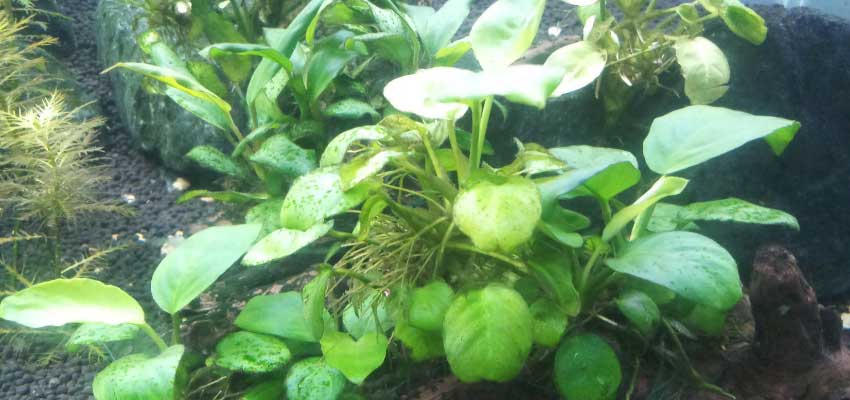
I’ve read many varying opinions on whether or not you can keep Mexican dwarfs in a tank with plants. As I’ve witnessed, regular crayfish will often destroy real plants in a fish tank.
My experience with Mexican dwarf crayfish has been that if you keep them fed on a steady diet of plant-based foods like sinking algae pellets, they will leave your plants alone for the most part. However, these guys will probably munch on decaying plant matter in your tank.
Personally, I would suggest keeping plants in almost any tank. They help manage the CO2, nitrites, and nitrates in your tank. This makes your tank much safer and healthier for aquatic life.
Breeding
Breeding Mexican dwarf crays isn’t really that challenging for the owners. In other words, there’s not much an aquarist has to do to make crayfish breed. It just comes naturally. Basically, you just need a male and a female together in a tank. However, how it takes place is a bit interesting.
Basically, the female urinates to attract a partner when she’s ready to mate. Yep, she urinates as her urine is a strong aphrodisiac for the male crayfish. She then plays hard to get.
Eventually, however, a male crayfish catches her and deposits his sperm. The female then carries the eggs under her tail before hatching the baby crays in roughly three to four weeks. Sometimes water temperature can determine when crayfish hatch.
As a note, if you decide to breed your crayfish, you’ll probably want to have an additional tank handy. After your crayfish mate, you will eventually see eggs and then baby crays on the mother’s underbelly. This is the time you want to remove the mother from the tank and gently remove the babies from her underbelly into another tank. Make sure the separate tank has a sponge filter.
After the babies are removed, you can then put the mother crayfish back into the main tank.
Mexican Dwarf Crayfish: Recap
Mexican dwarf crays can be a great addition to community fish tanks. They are vibrantly colored orange crayfish—omnivores that are relatively easy to keep and have pleasant dispositions generally speaking. However, keepers need to maintain the water to ensure healthy living conditions as these crayfish are very sensitive to toxins. Additionally, tankmates for these animals should be chosen wisely as Mexican dwarfs are very small animals, and finding the right balance of tank mates is very important.
Mexican dwarf crayfish, like other types of crayfish, are super-fun to watch!

